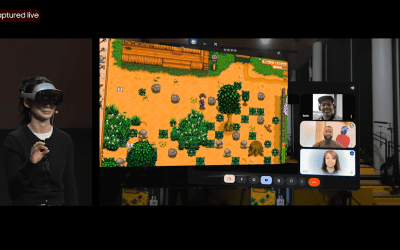
Agent

A Coding Guide to Build an Intelligent Conversational AI Agent with Agent Memory Using Cognee and Free Hugging Face Models
In this tutorial, we delve into building an advanced AI agent with agent memory using Cognee and Hugging Face models, utilizing entirely free, open-source tools that work seamlessly in Google Colab and other notebook. We configure Cognee for memory storage and retrieval, integrate a lightweight conversational model for generating responses, and bring it all together…

ByteDance Just Released Trae Agent: An LLM-based Agent for General Purpose Software Engineering Tasks
ByteDance, the Chinese tech giant behind TikTok and other global platforms, has officially released Trae Agent, a general-purpose software engineering agent powered by large language models (LLMs). Designed to execute complex programming tasks via natural language prompts, Trae Agent offers a highly capable and extensible Command-Line Interface (CLI), redefining how developers can interact with their…

Building a BioCypher-Powered AI Agent for Biomedical Knowledge Graph Generation and Querying
In this tutorial, we implement the BioCypher AI Agent, a powerful tool designed for building, querying, and analyzing biomedical knowledge graphs using the BioCypher framework. By combining the strengths of BioCypher, a high-performance, schema-based interface for biological data integration, with the flexibility of NetworkX, this tutorial empowers users to simulate complex biological relationships such as…

Google AI Releases Gemini CLI: An Open-Source AI Agent for Your Terminal
Google has unveiled Gemini CLI, an open-source command-line AI agent that integrates the Gemini 2.5 Pro model directly into the terminal. Designed for developers and technical power users, Gemini CLI allows users to interact with Gemini using natural language directly from the command line—supporting workflows such as code explanation, debugging, documentation generation, file manipulation, and…

Build an Intelligent Multi-Tool AI Agent Interface Using Streamlit for Seamless Real-Time Interaction
In this tutorial, we’ll build a powerful and interactive Streamlit application that brings together the capabilities of LangChain, the Google Gemini API, and a suite of advanced tools to create a smart AI assistant. Using Streamlit’s intuitive interface, we’ll create a chat-based system that can search the web, fetch Wikipedia content, perform calculations, remember key…

How to Build an Asynchronous AI Agent Network Using Gemini for Research, Analysis, and Validation Tasks
In this tutorial, we introduce the Gemini Agent Network Protocol, a powerful and flexible framework designed to enable intelligent collaboration among specialized AI agents. Leveraging Google’s Gemini models, the protocol facilitates dynamic communication between agents, each equipped with distinct roles: Analyzer, Researcher, Synthesizer, and Validator. Users will learn to set up and configure an asynchronous…

A Step-by-Step Coding Guide to Building an Iterative AI Workflow Agent Using LangGraph and Gemini
In this tutorial, we demonstrate how to build a multi-step, intelligent query-handling agent using LangGraph and Gemini 1.5 Flash. The core idea is to structure AI reasoning as a stateful workflow, where an incoming query is passed through a series of purposeful nodes: routing, analysis, research, response generation, and validation. Each node operates as a…

A Coding Guide for Building a Self-Improving AI Agent Using Google’s Gemini API with Intelligent Adaptation Features
In this tutorial, we will explore how to create a sophisticated Self-Improving AI Agent using Google’s cutting-edge Gemini API. This self-improving agent demonstrates autonomous problem-solving, dynamically evaluates performance, learns from successes and failures, and iteratively enhances its capabilities through reflective analysis and self-modification. The tutorial walks through structured code implementation, detailing mechanisms for memory management,…

Step-by-Step Guide to Build a Customizable Multi-Tool AI Agent with LangGraph and Claude for Dynamic Agent Creation
In this comprehensive tutorial, we guide users through creating a powerful multi-tool AI agent using LangGraph and Claude, optimized for diverse tasks including mathematical computations, web searches, weather inquiries, text analysis, and real-time information retrieval. It begins by simplifying dependency installations to ensure effortless setup, even for beginners. Users are then introduced to structured implementations…

Microsoft AI Introduces Magentic-UI: An Open-Source Agent Prototype that Works with People to Complete Complex Tasks that Require Multi-Step Planning and Browser Use
Modern web usage spans many digital interactions, from filling out forms and managing accounts to executing data queries and navigating complex dashboards. Despite the web being deeply intertwined with productivity and work processes, many of these actions still demand repetitive human input. This scenario is especially true for environments that require detailed instructions or decisions…



